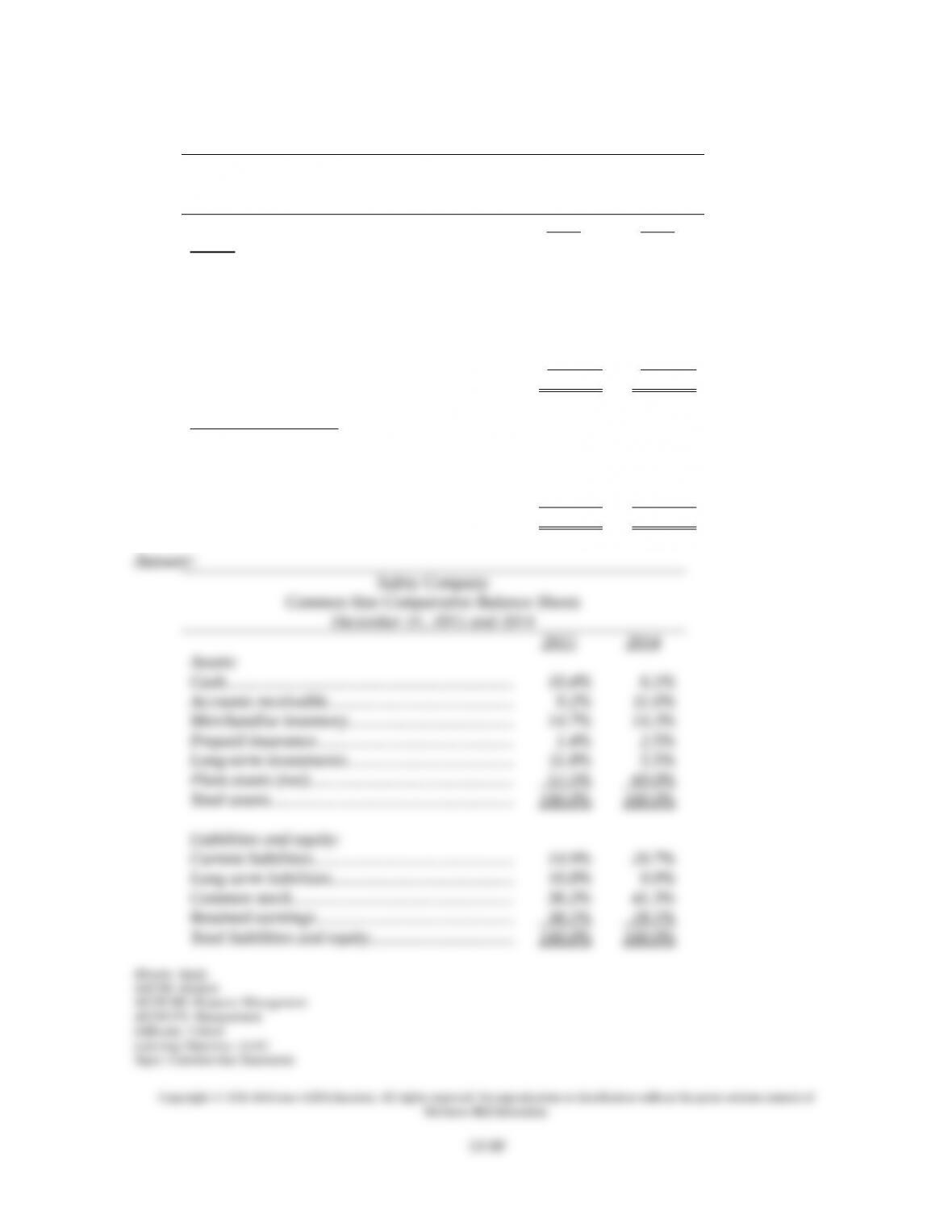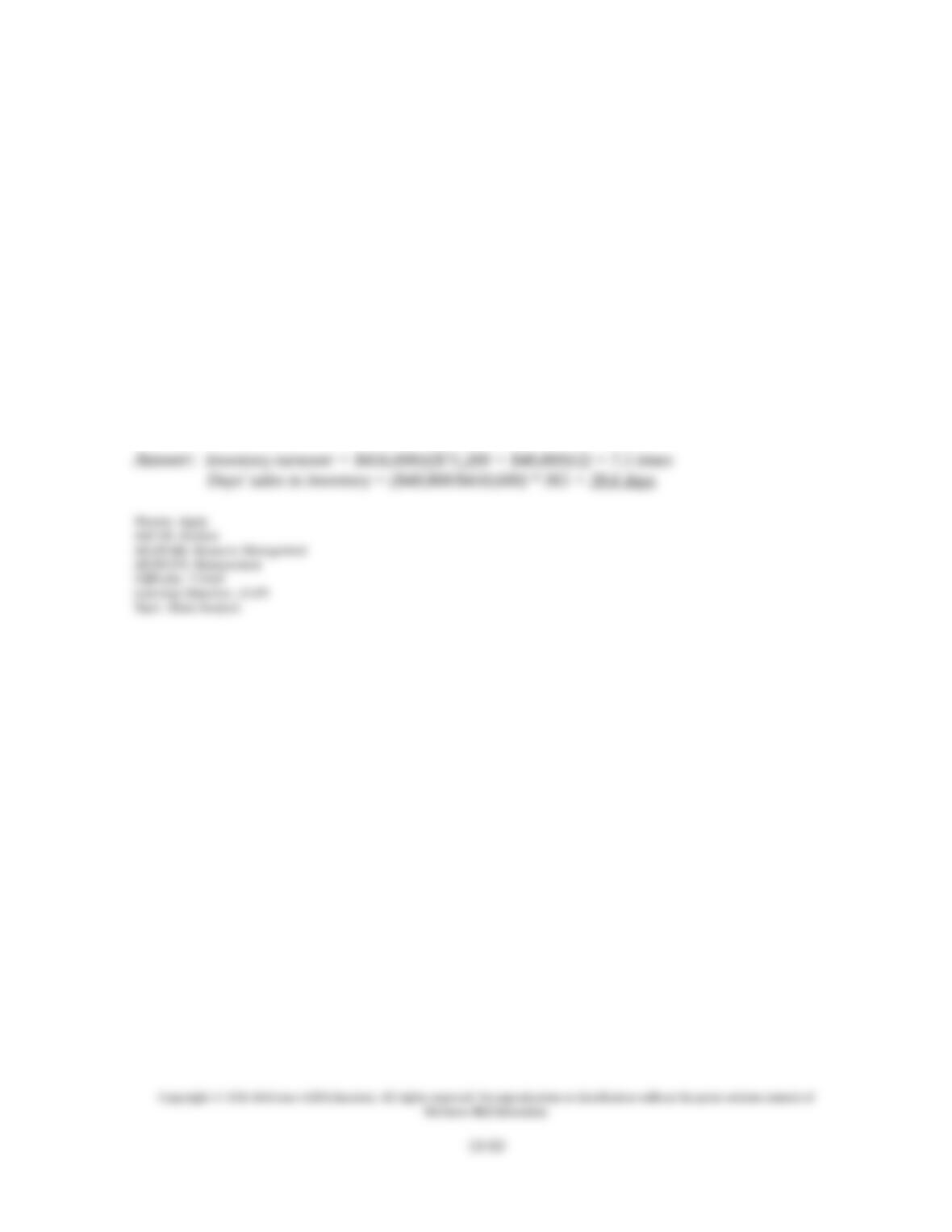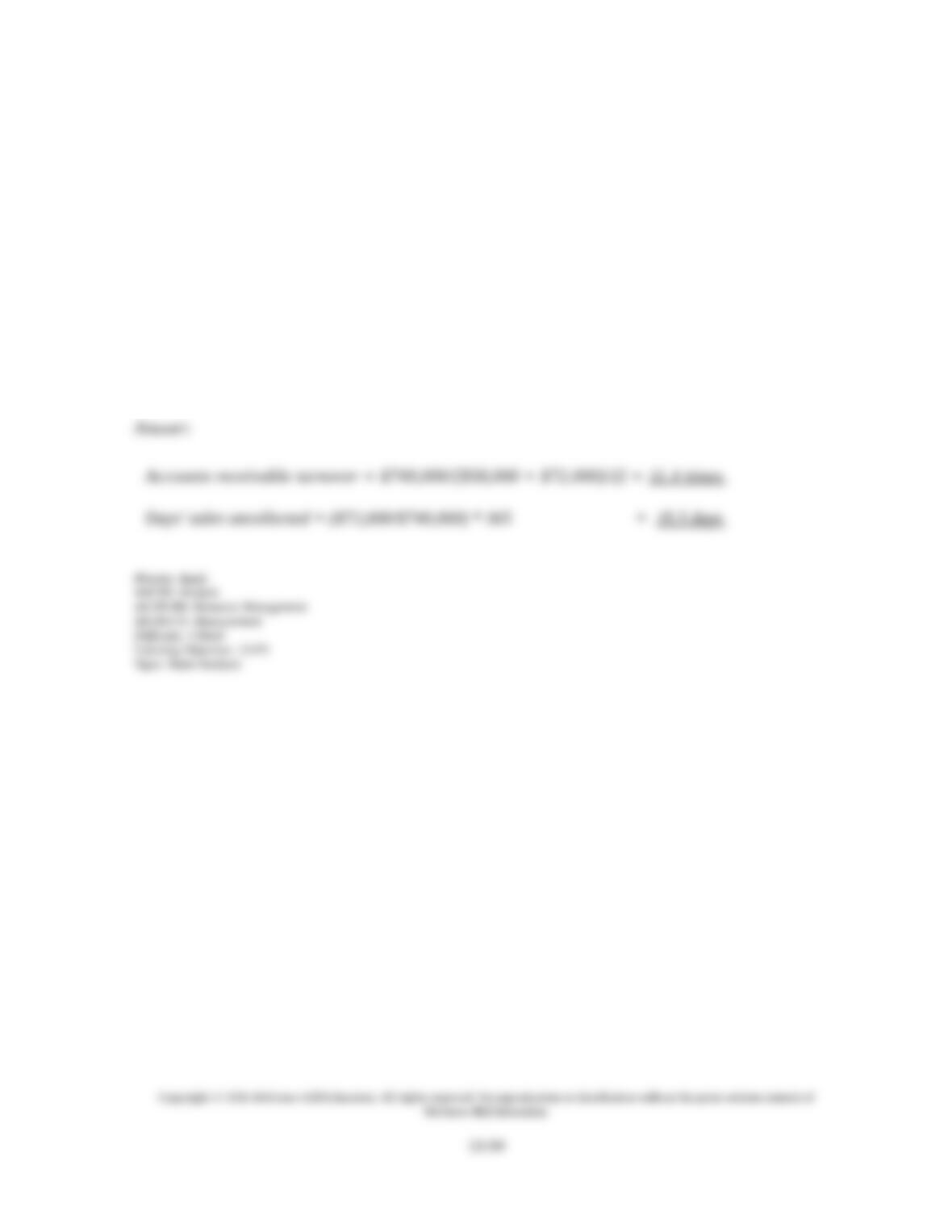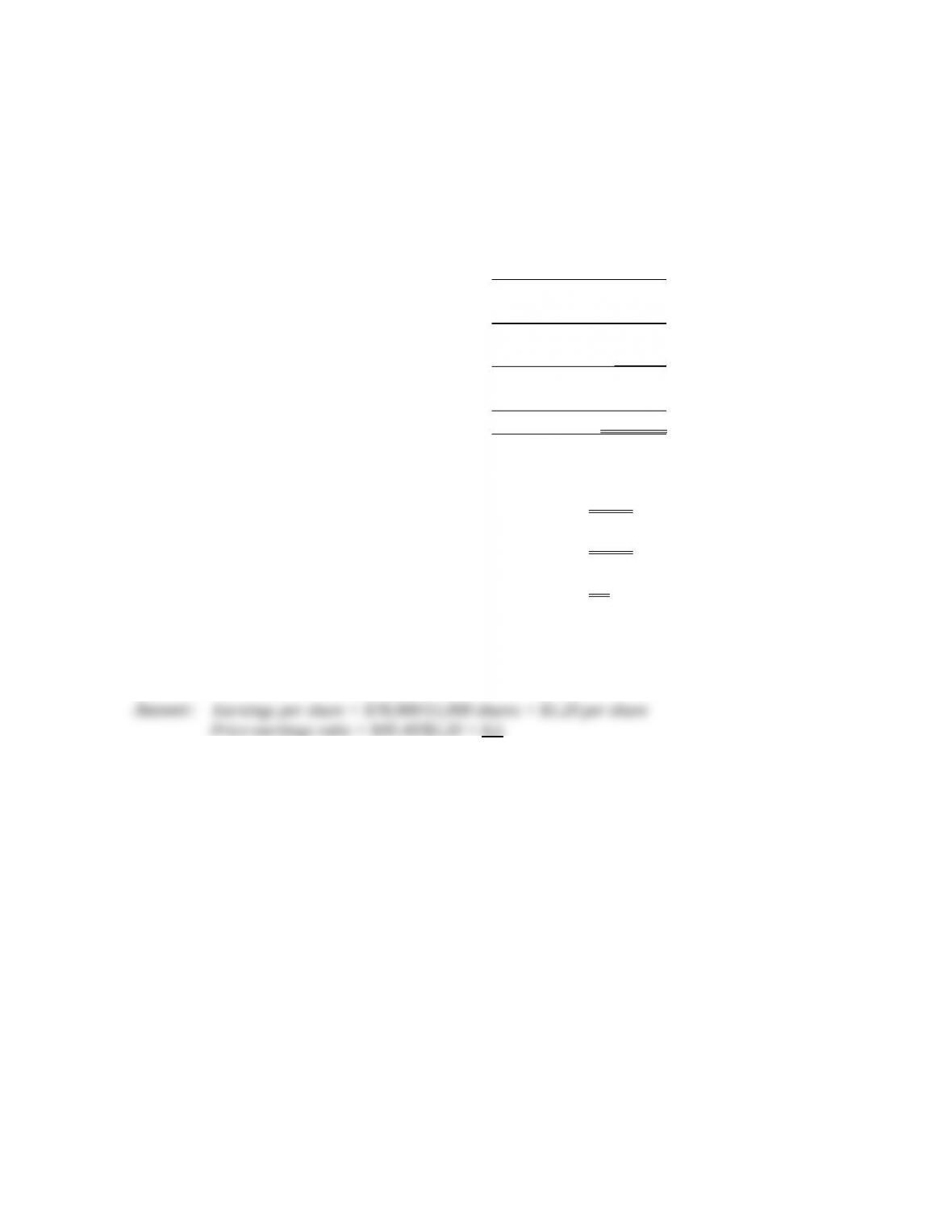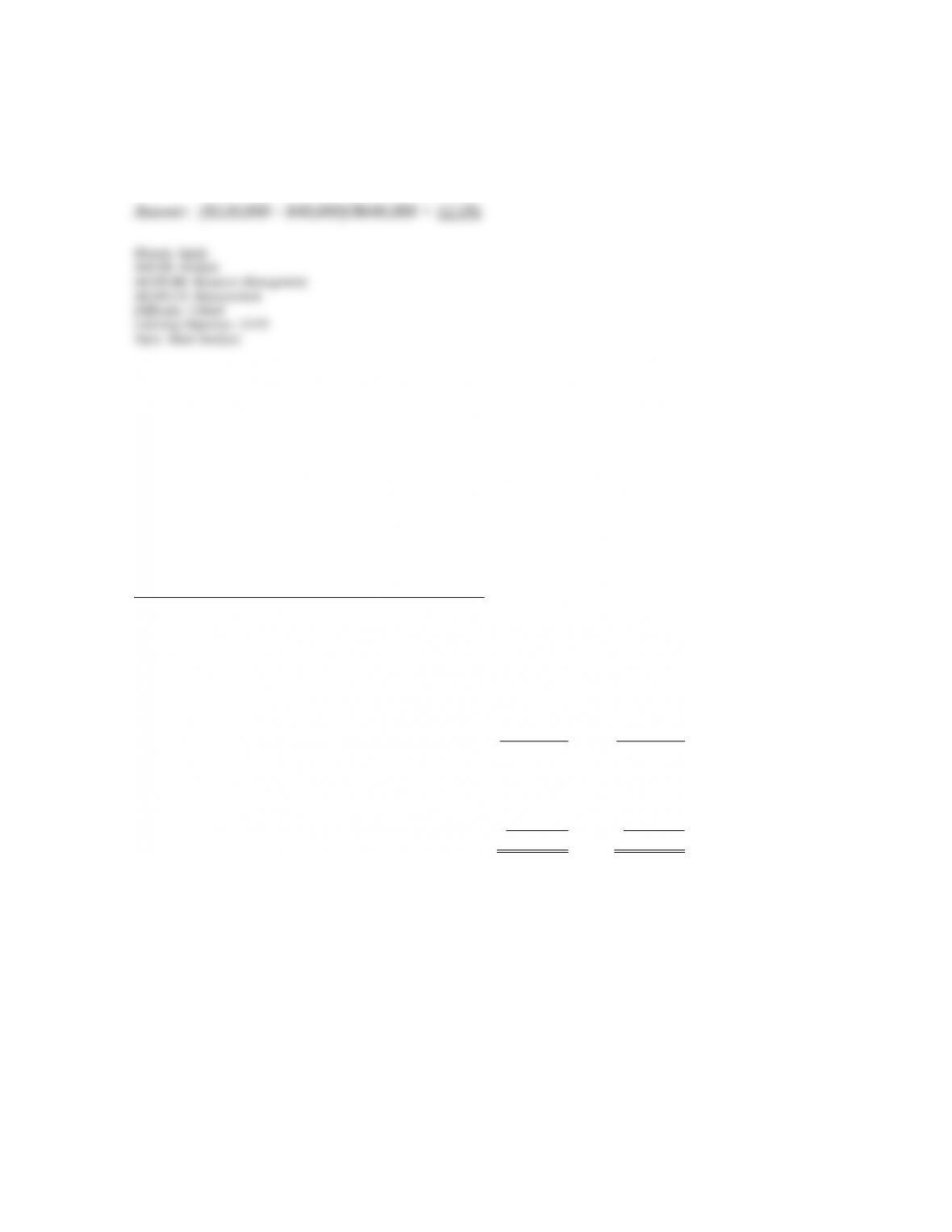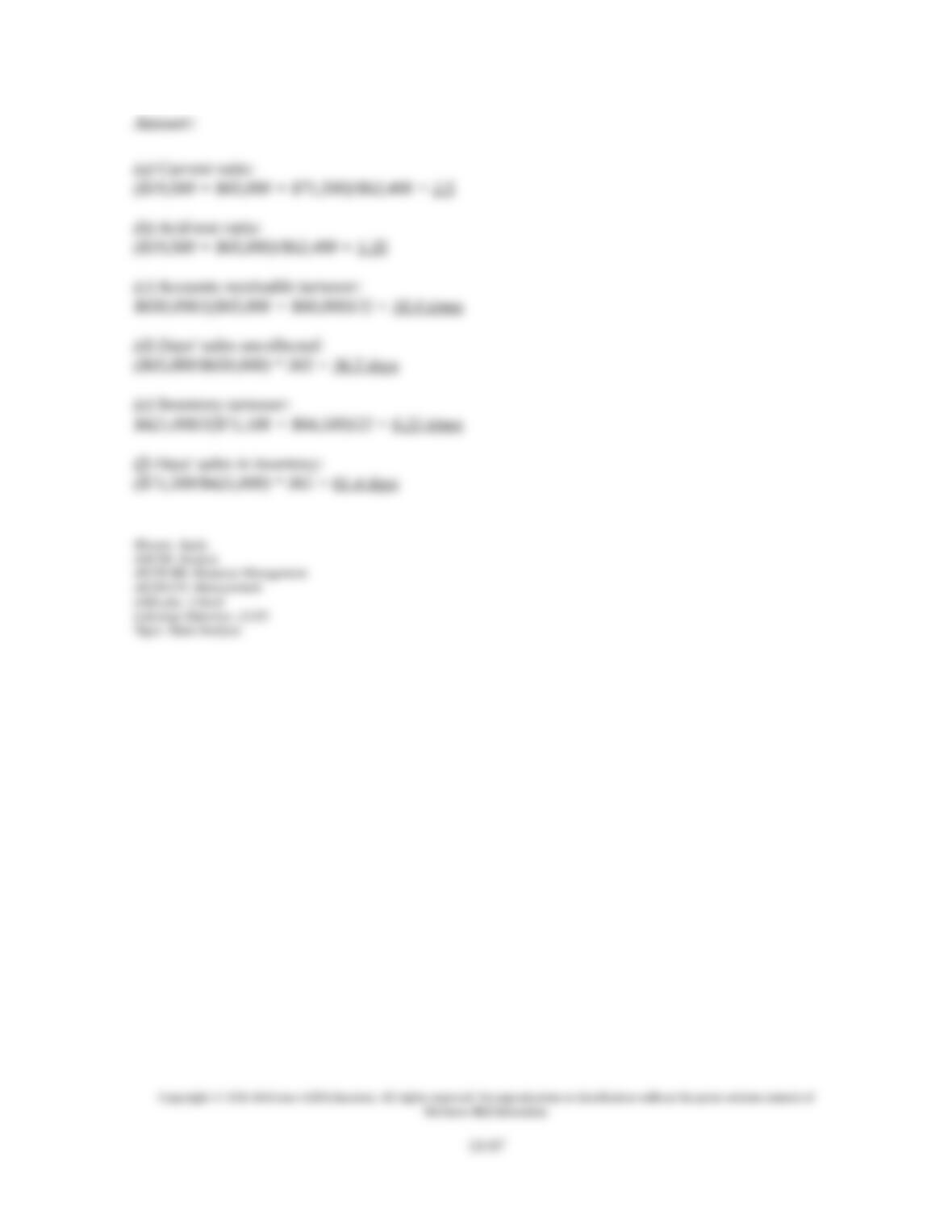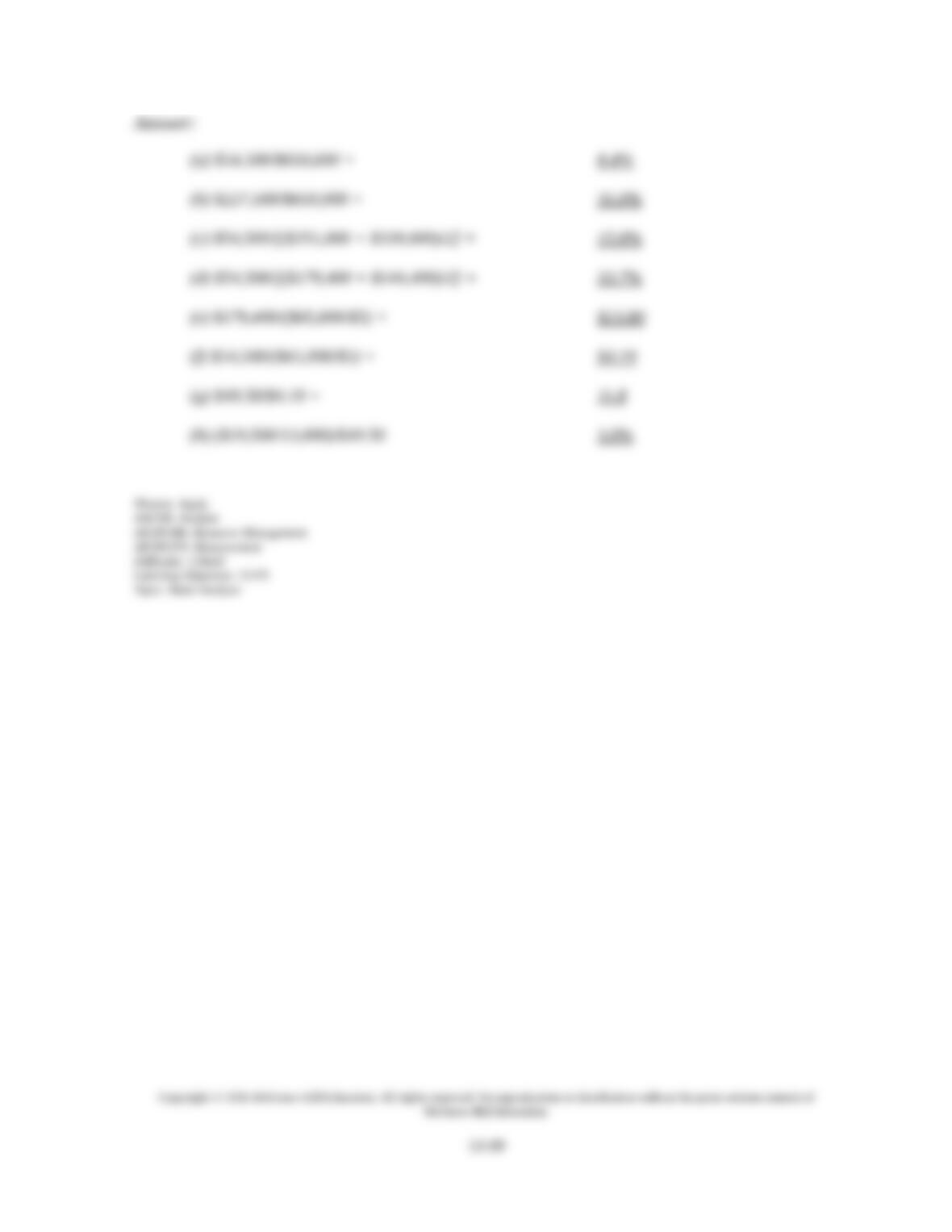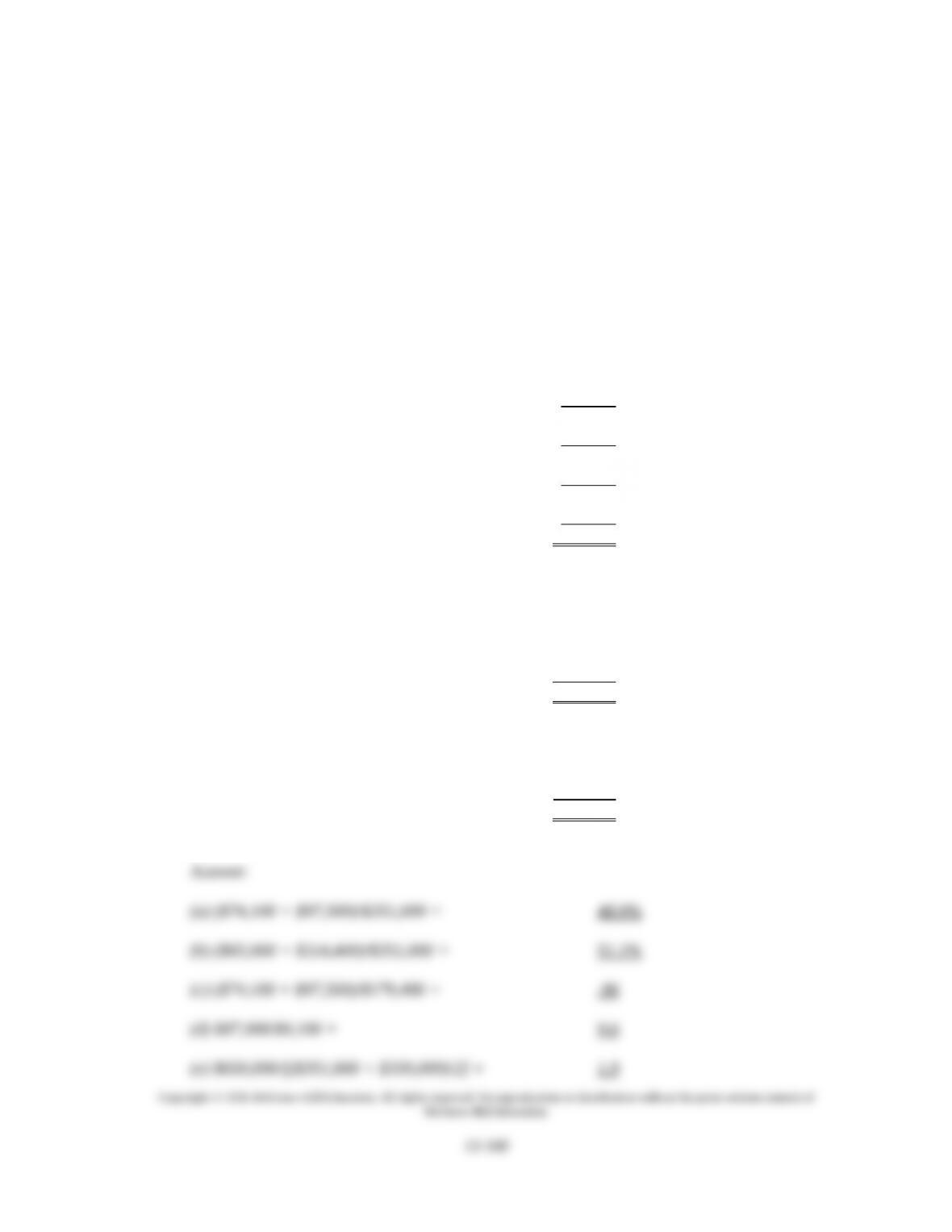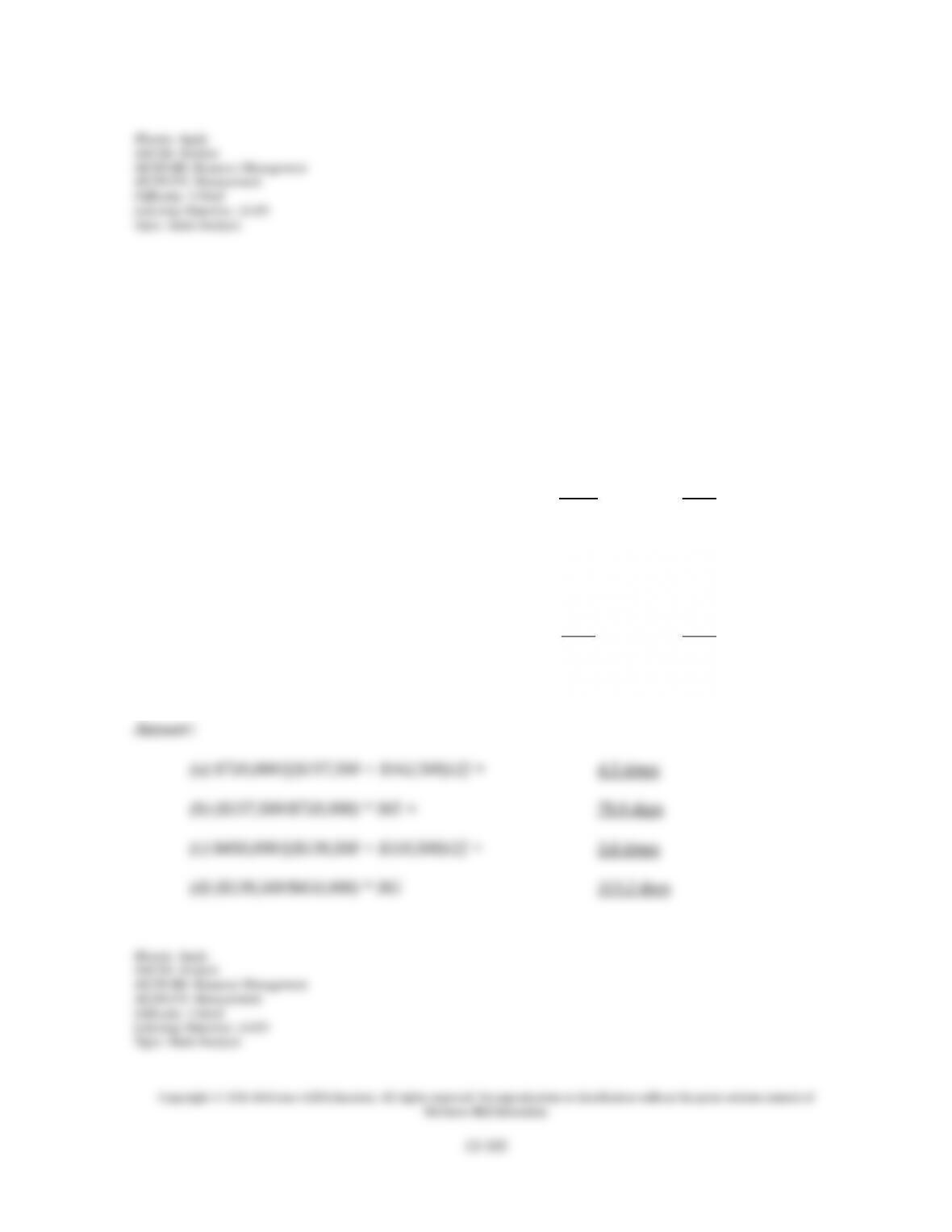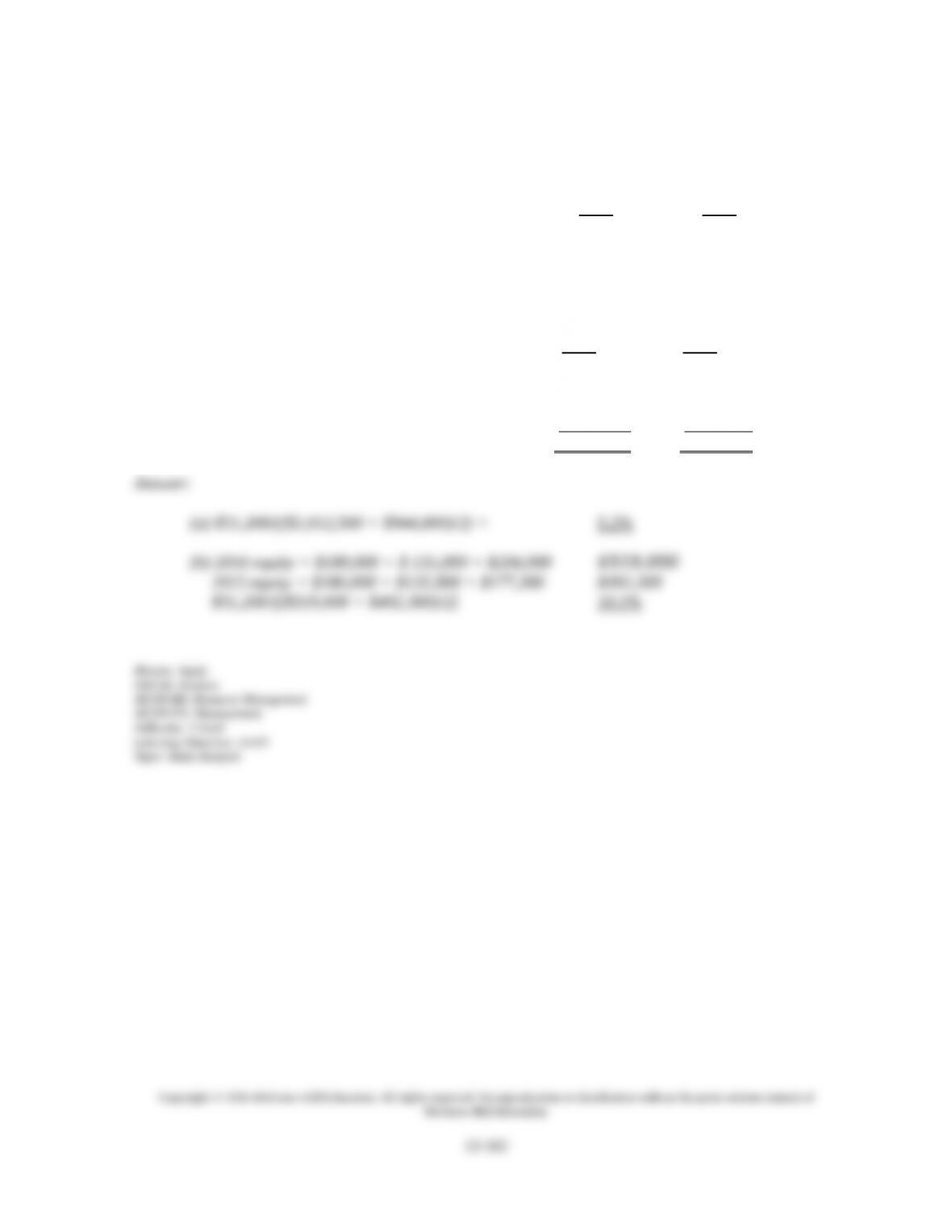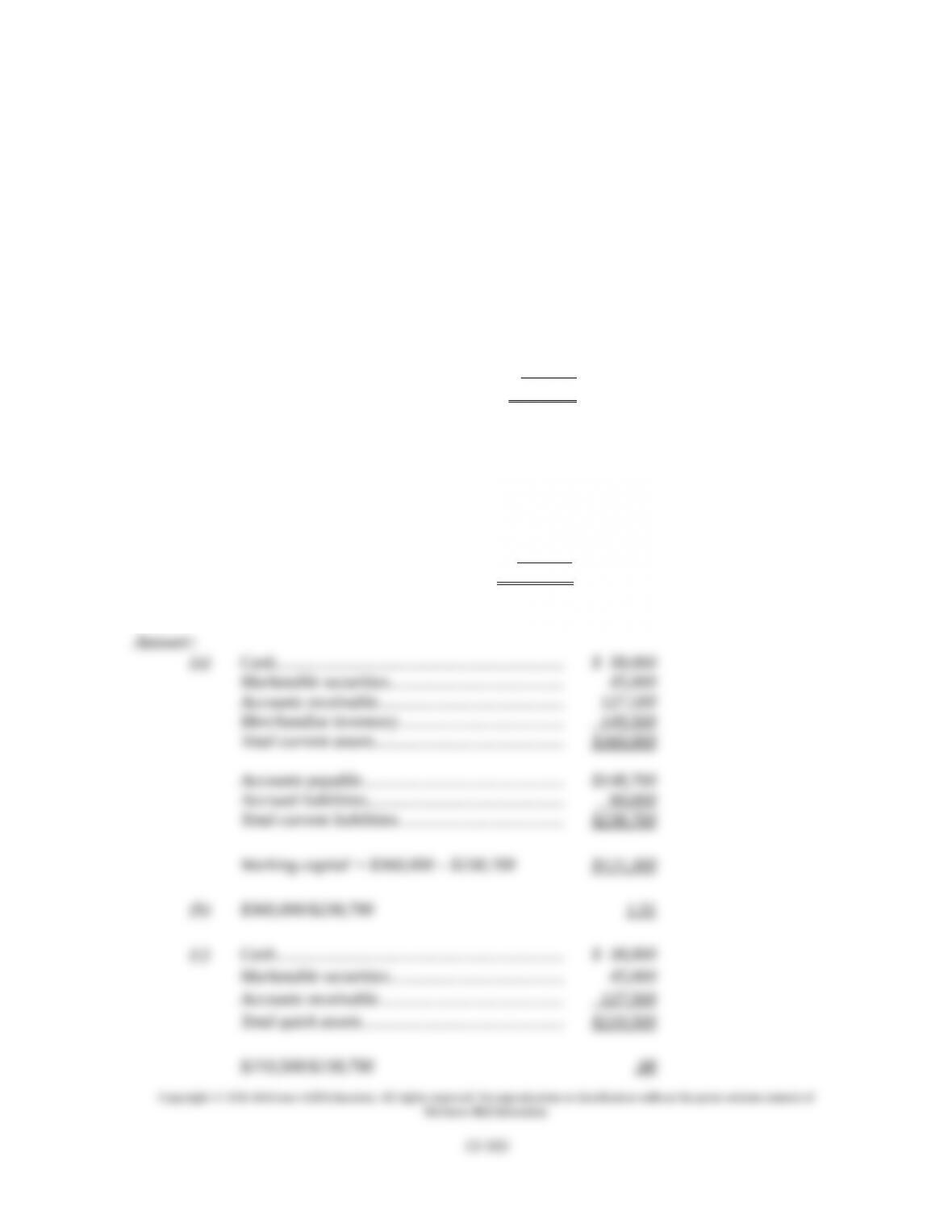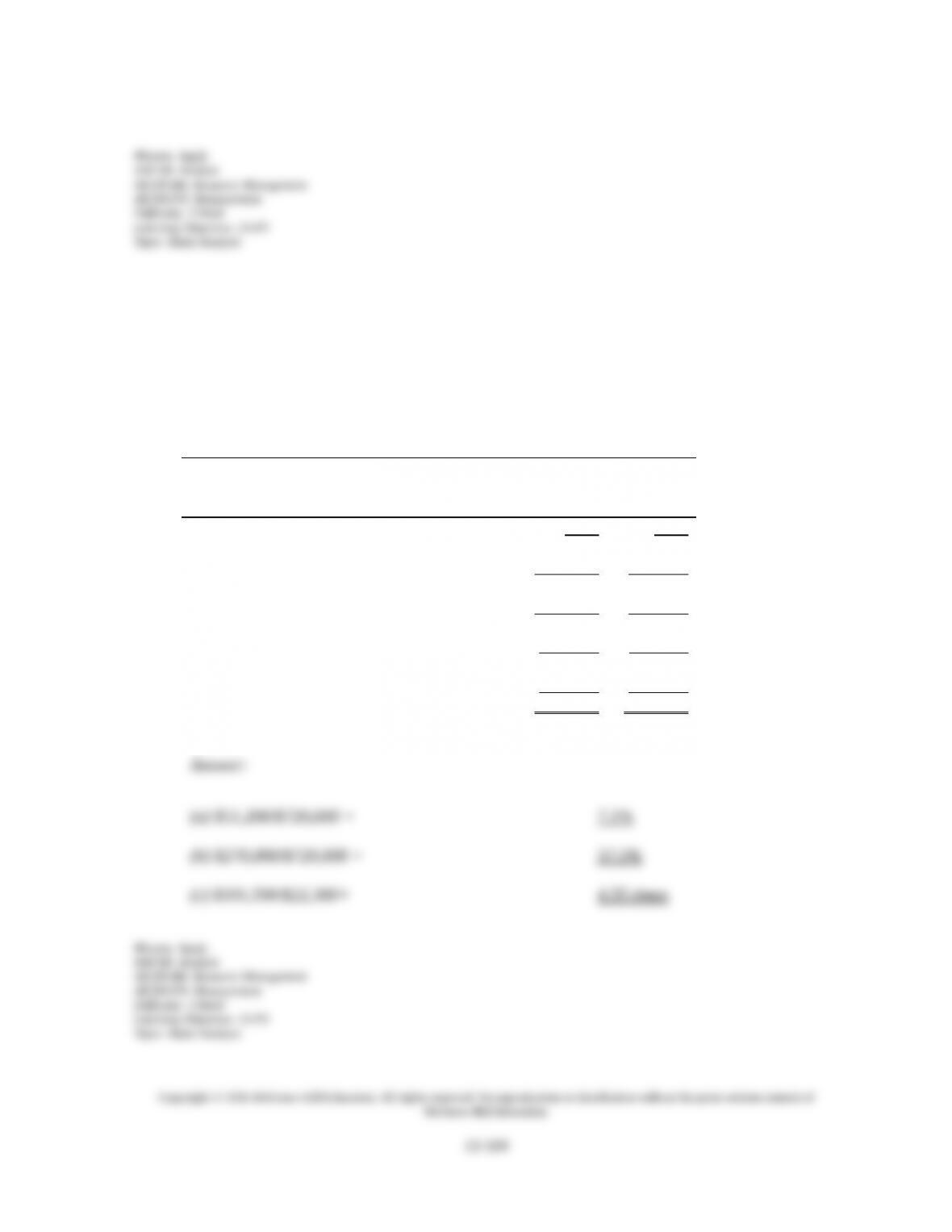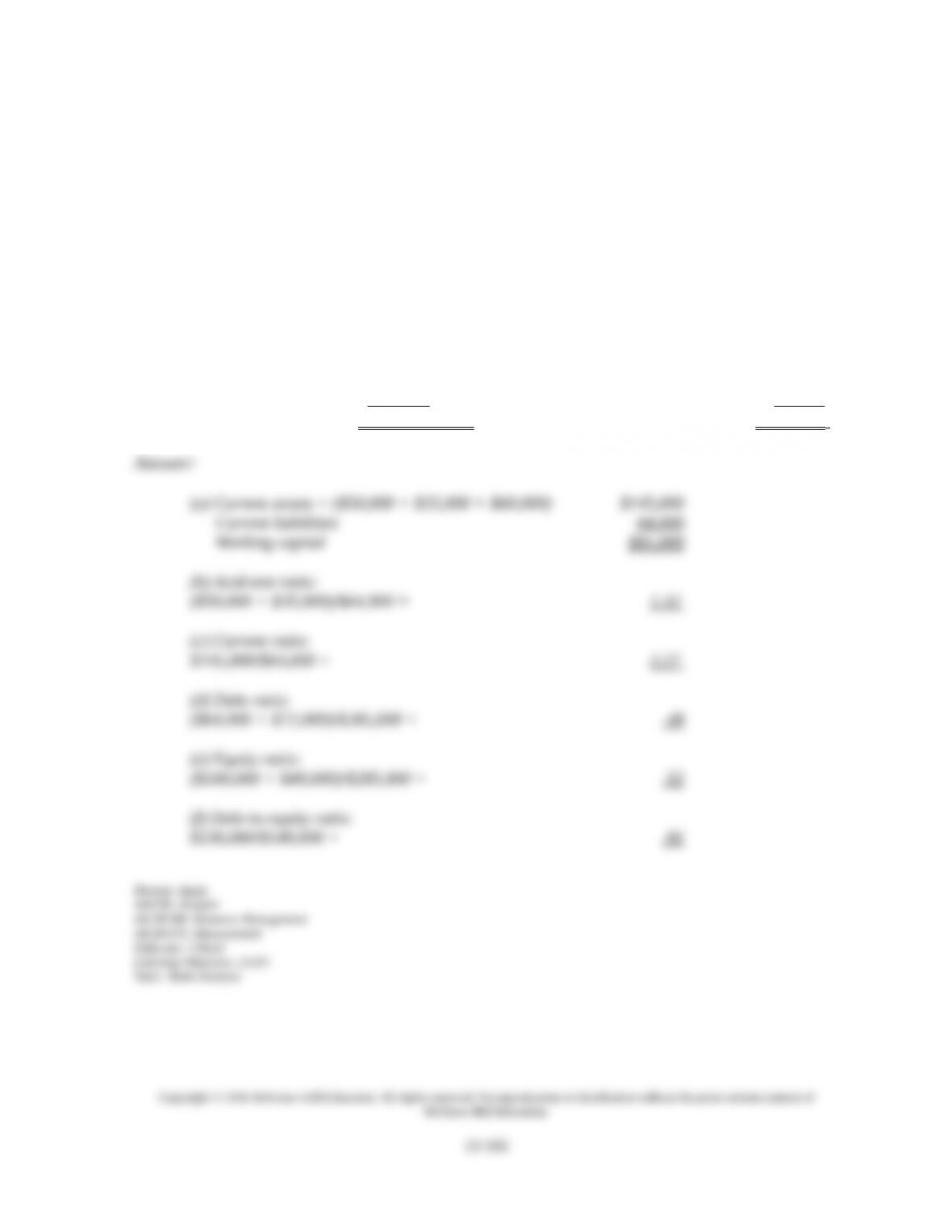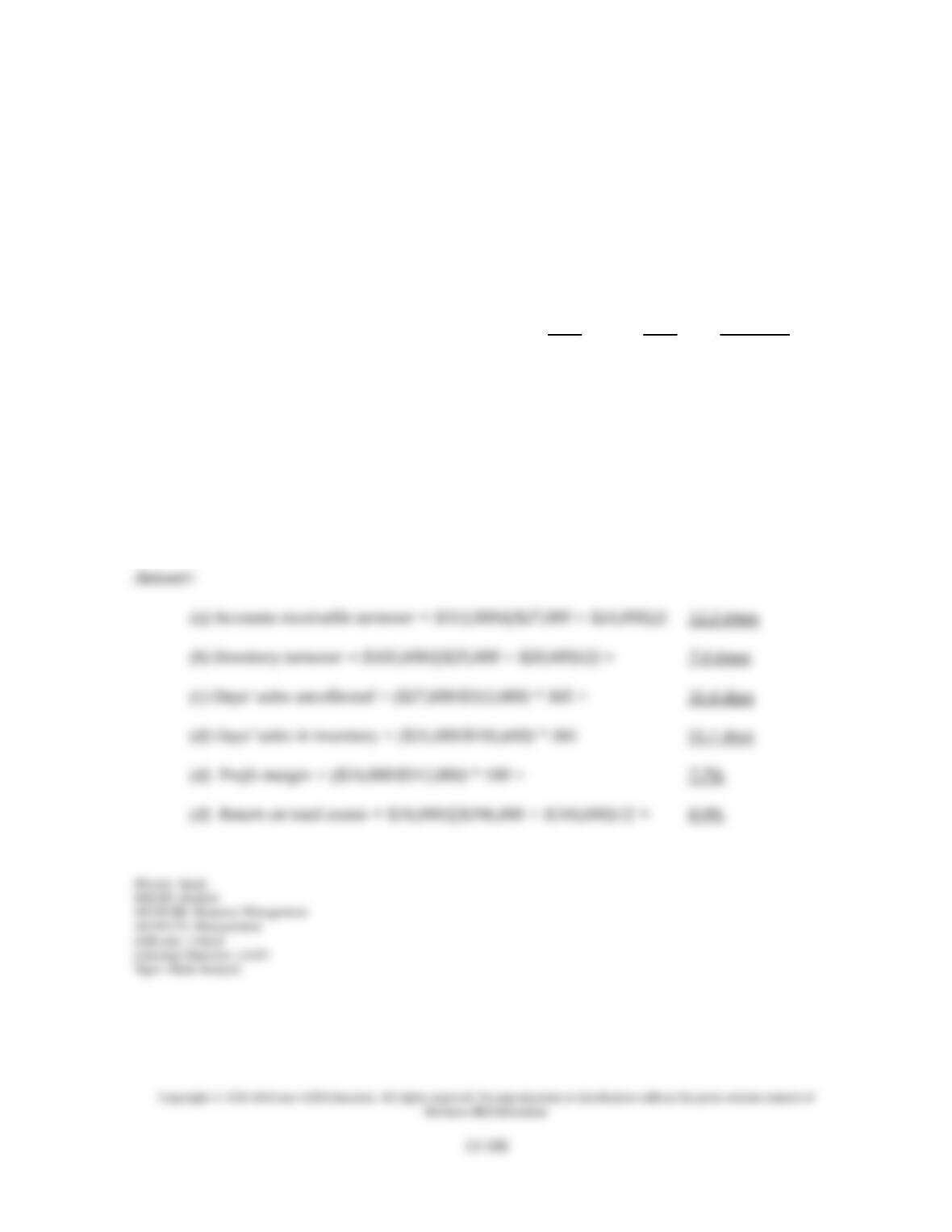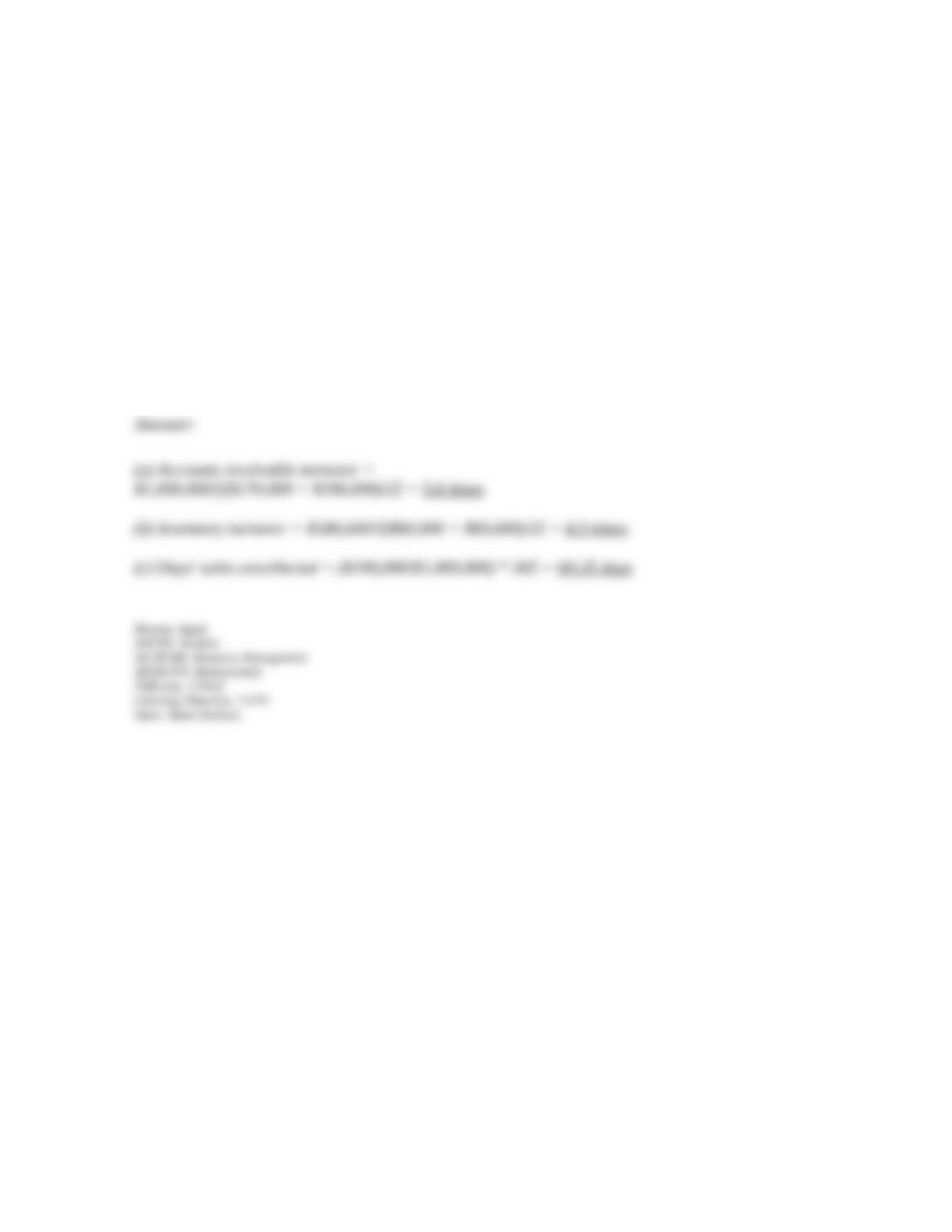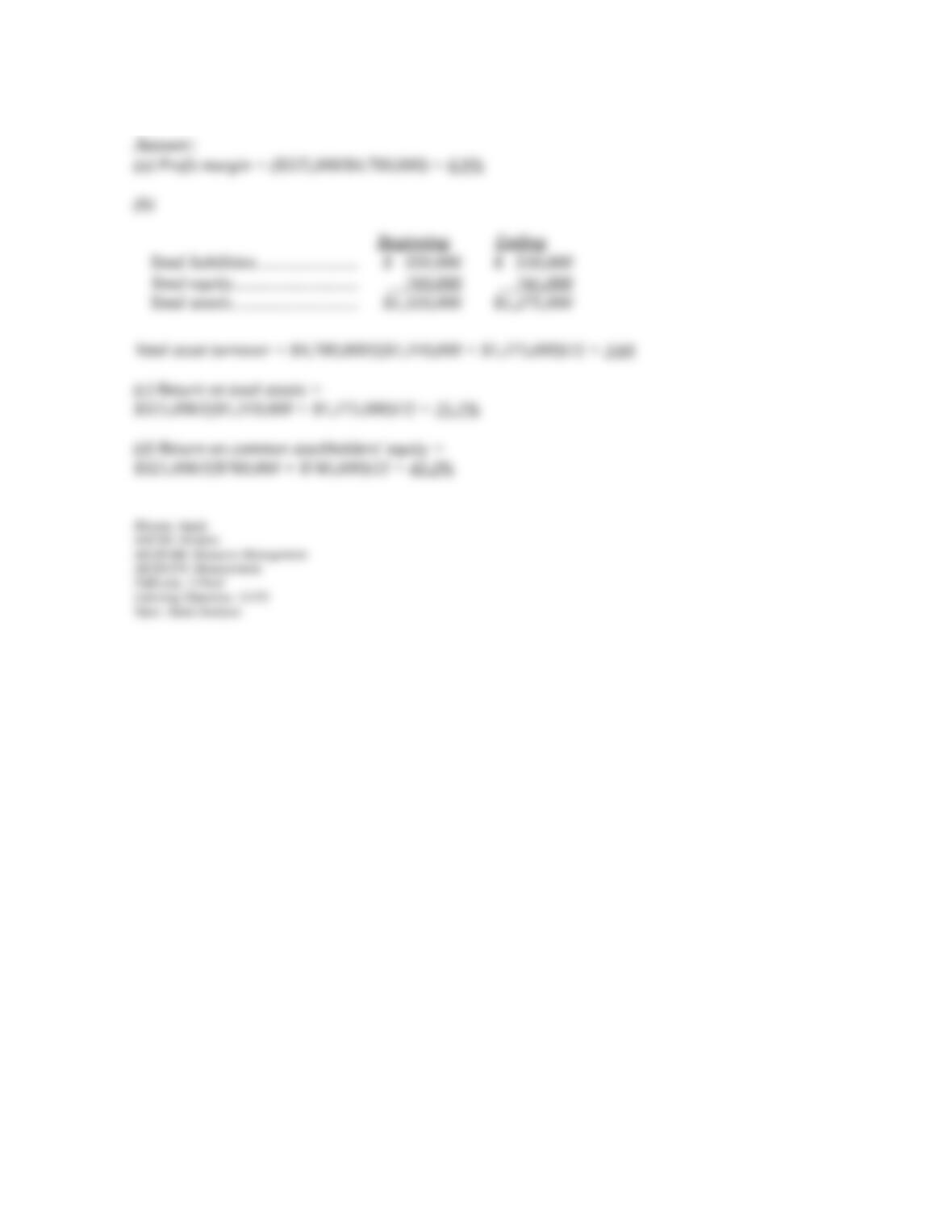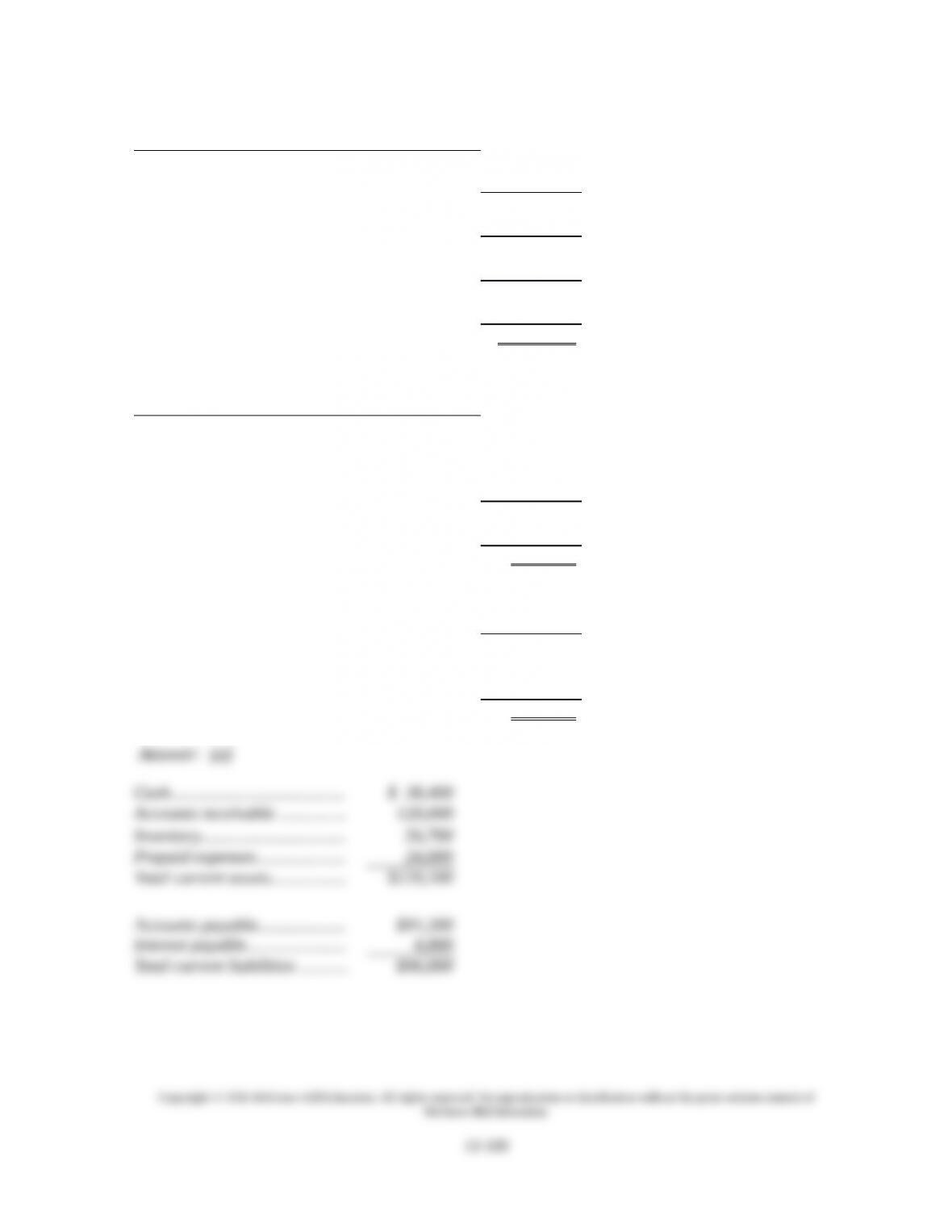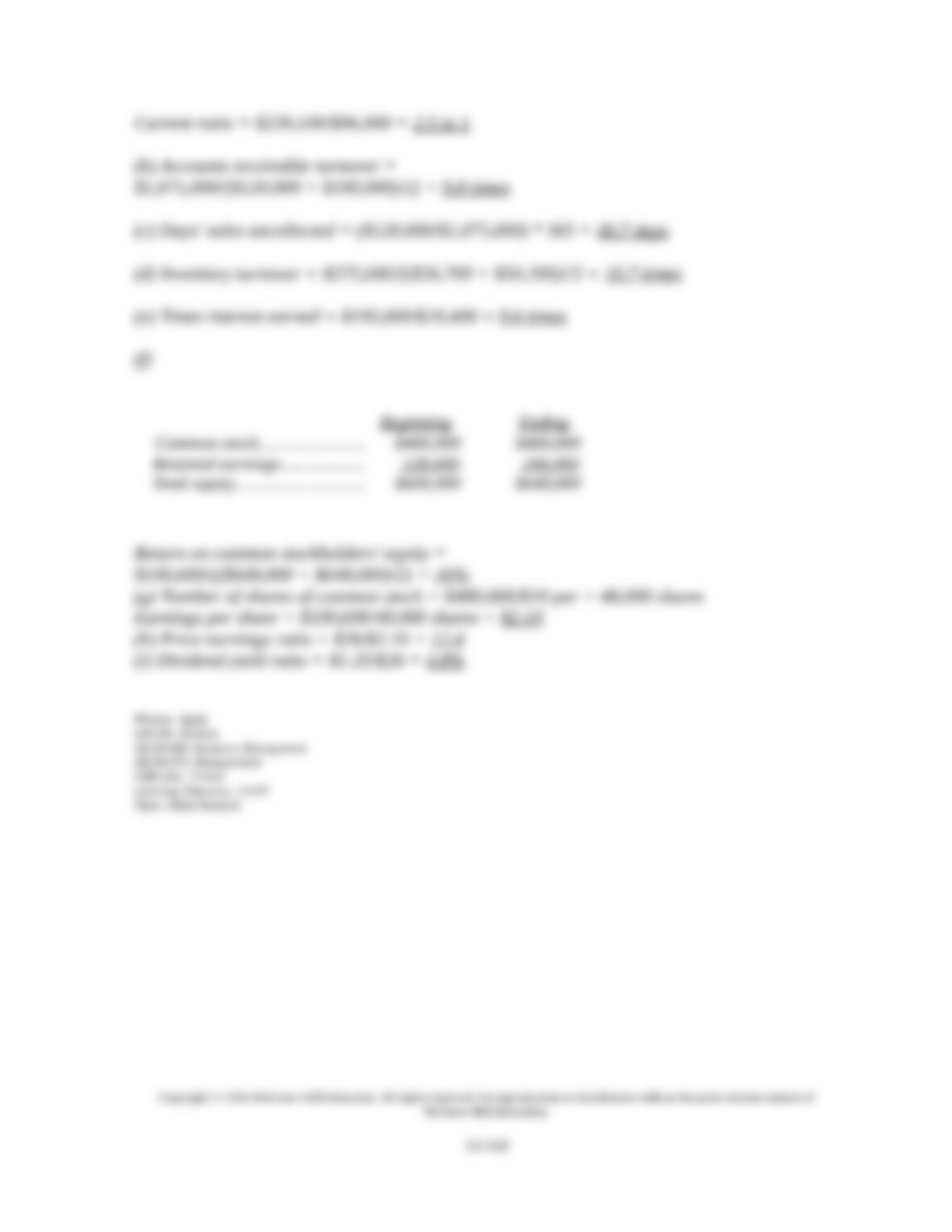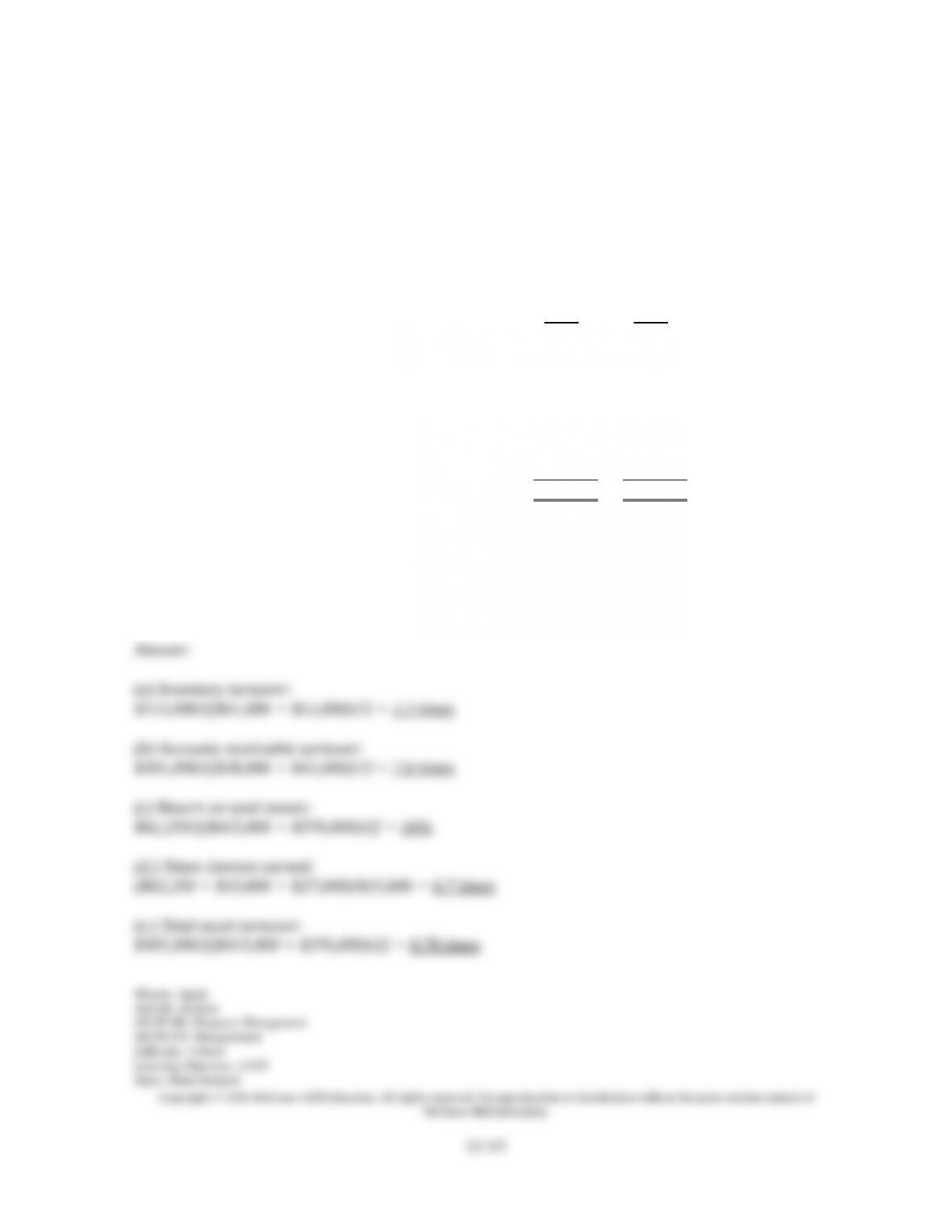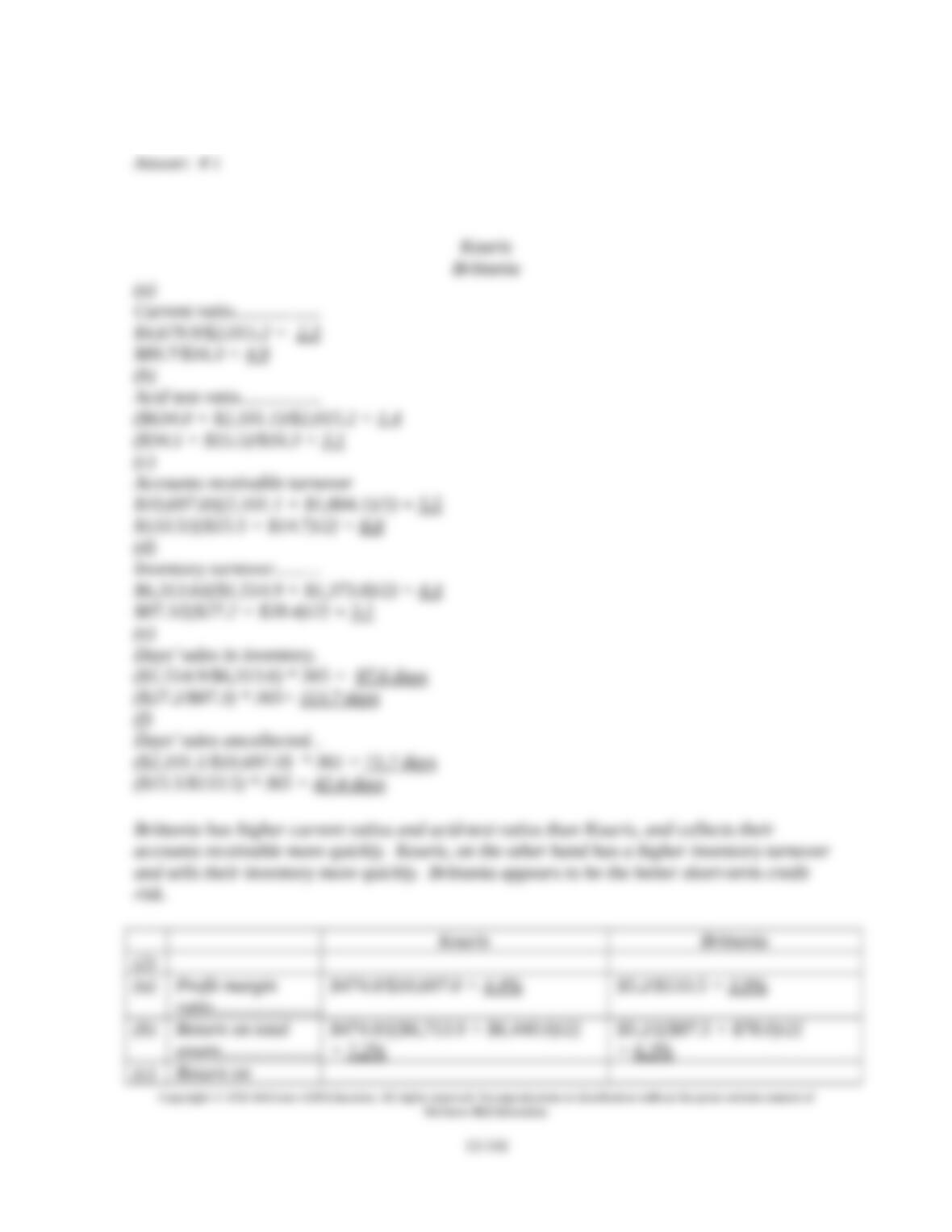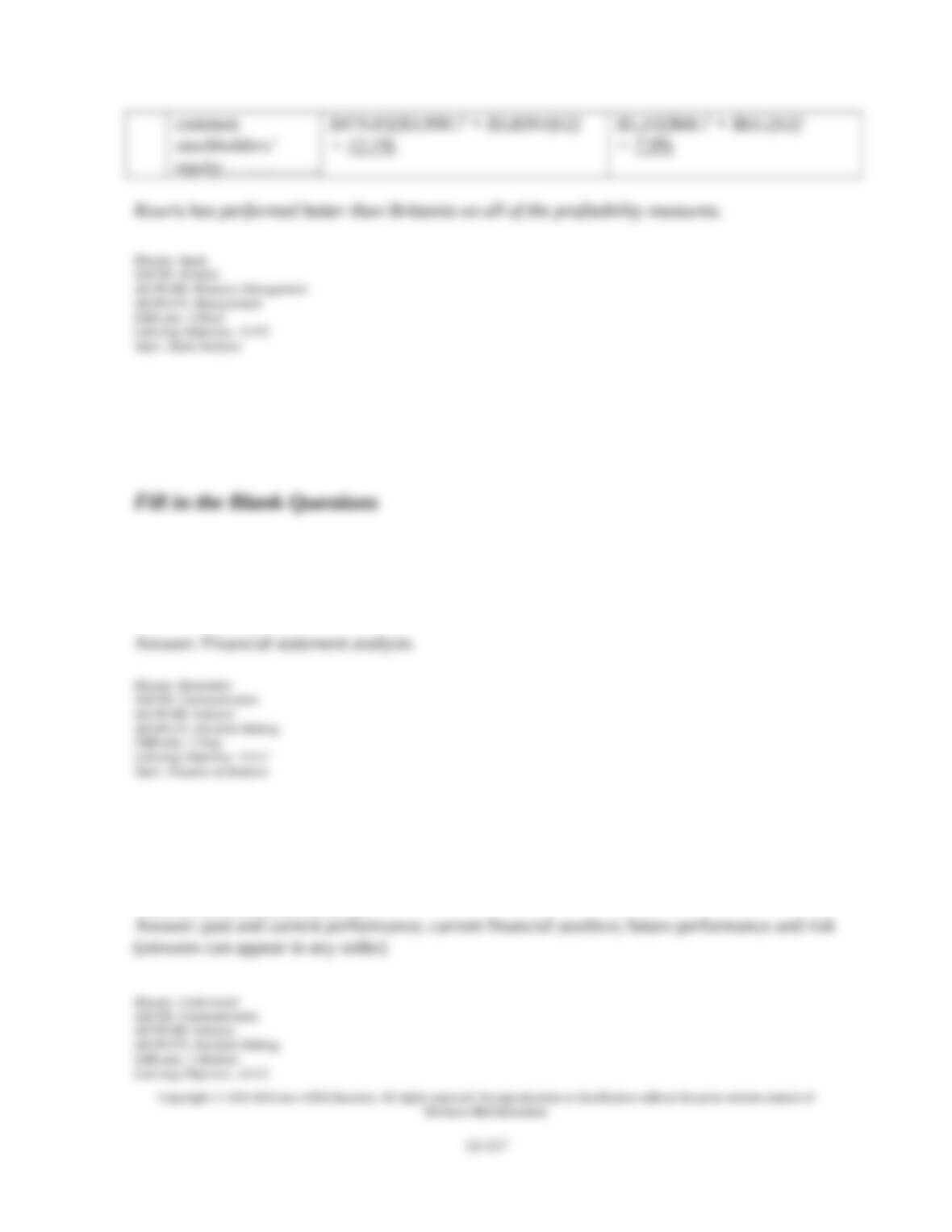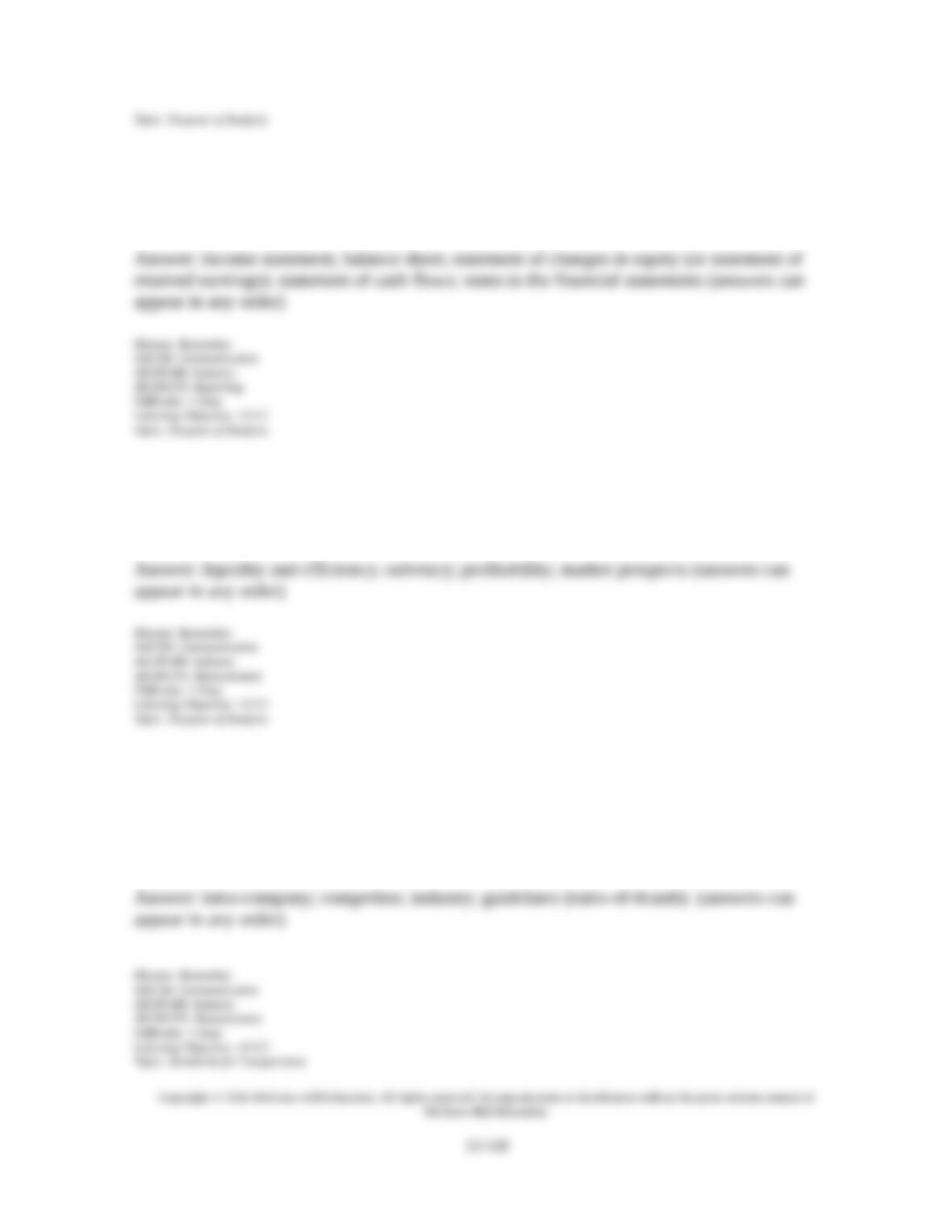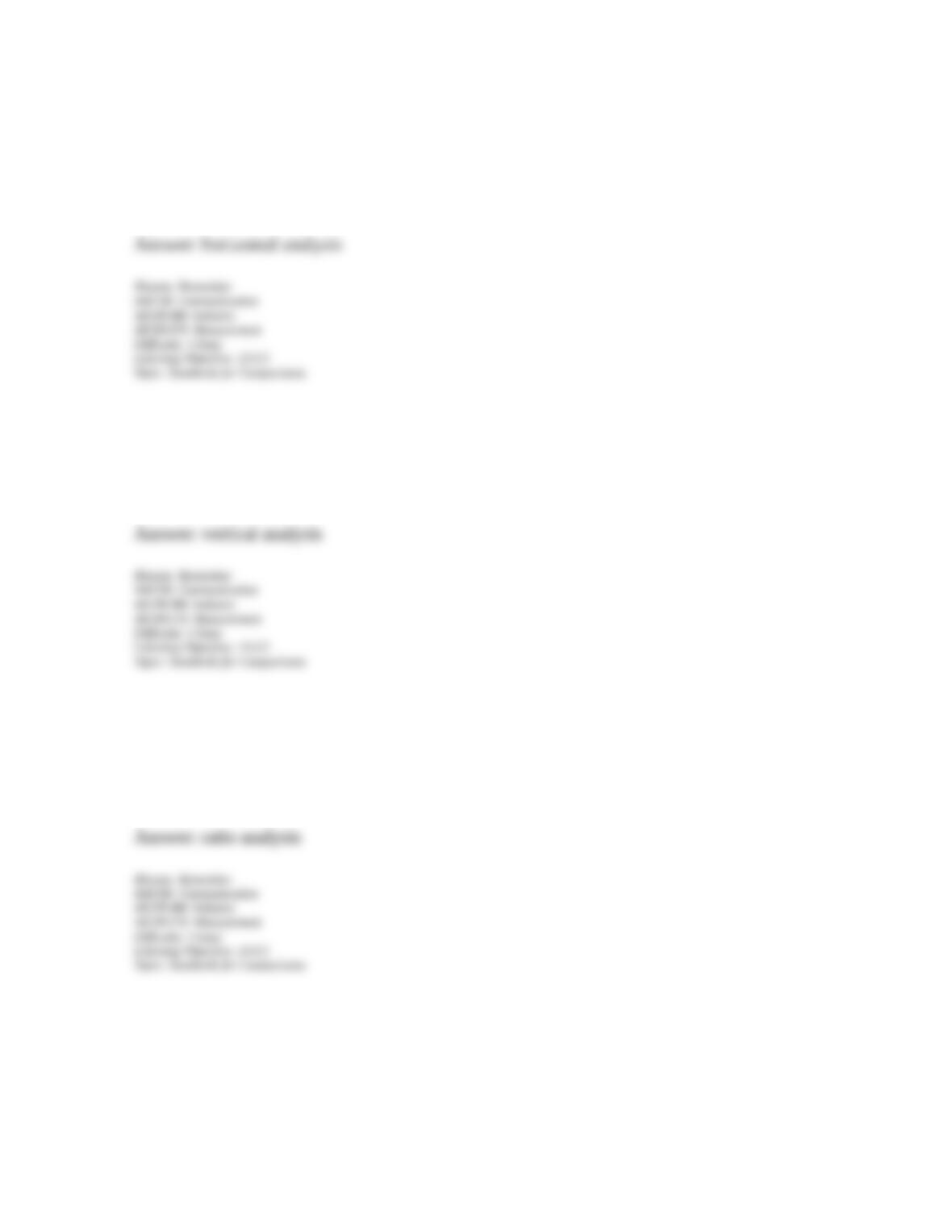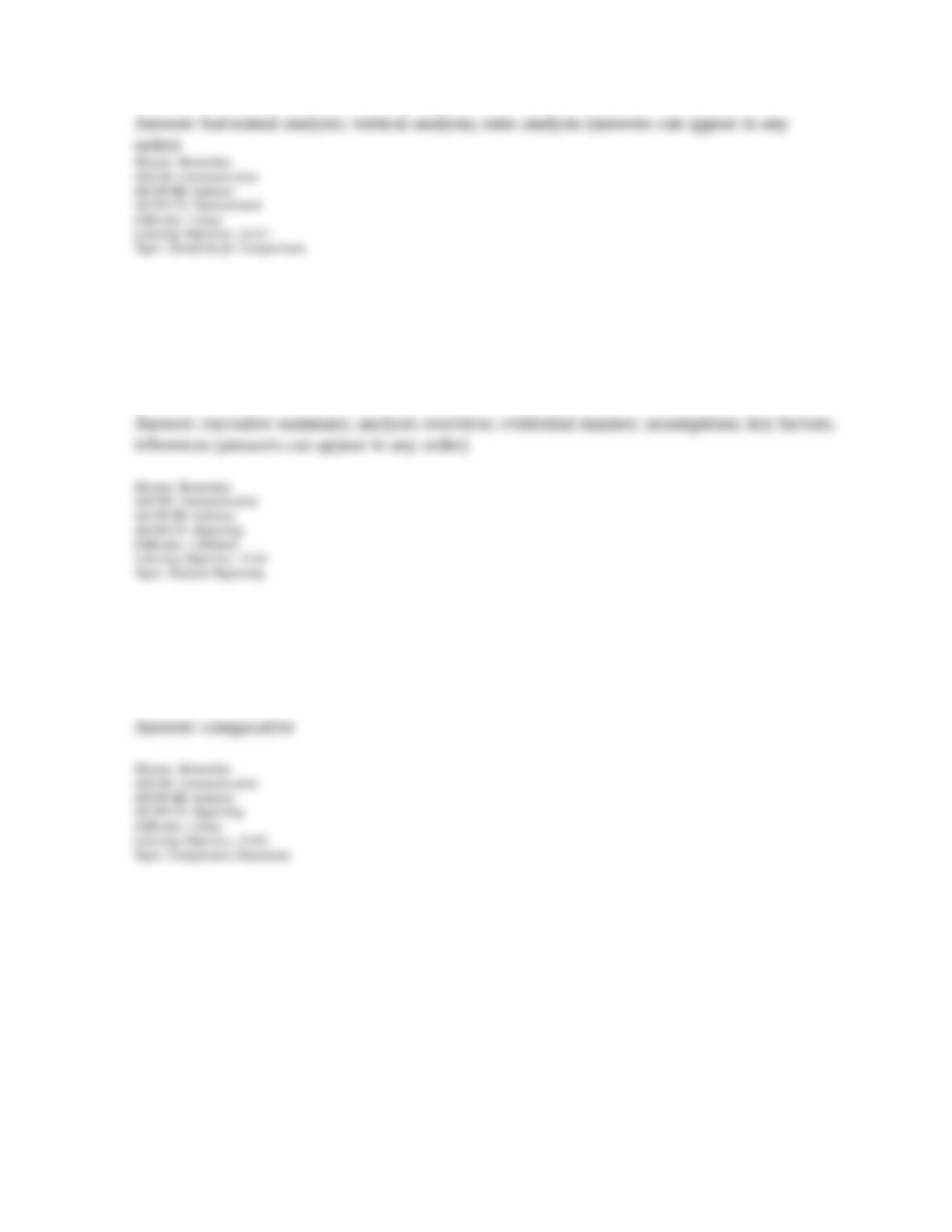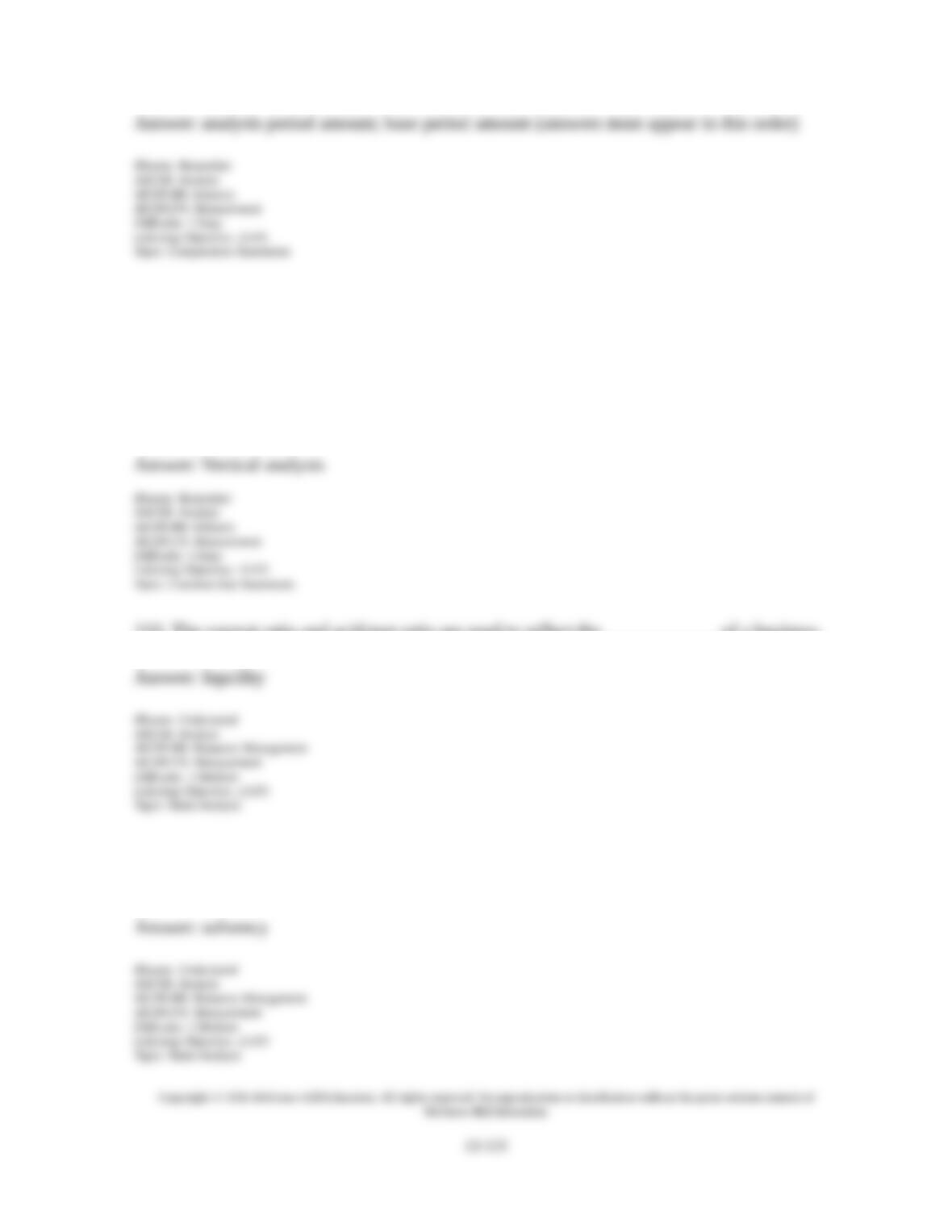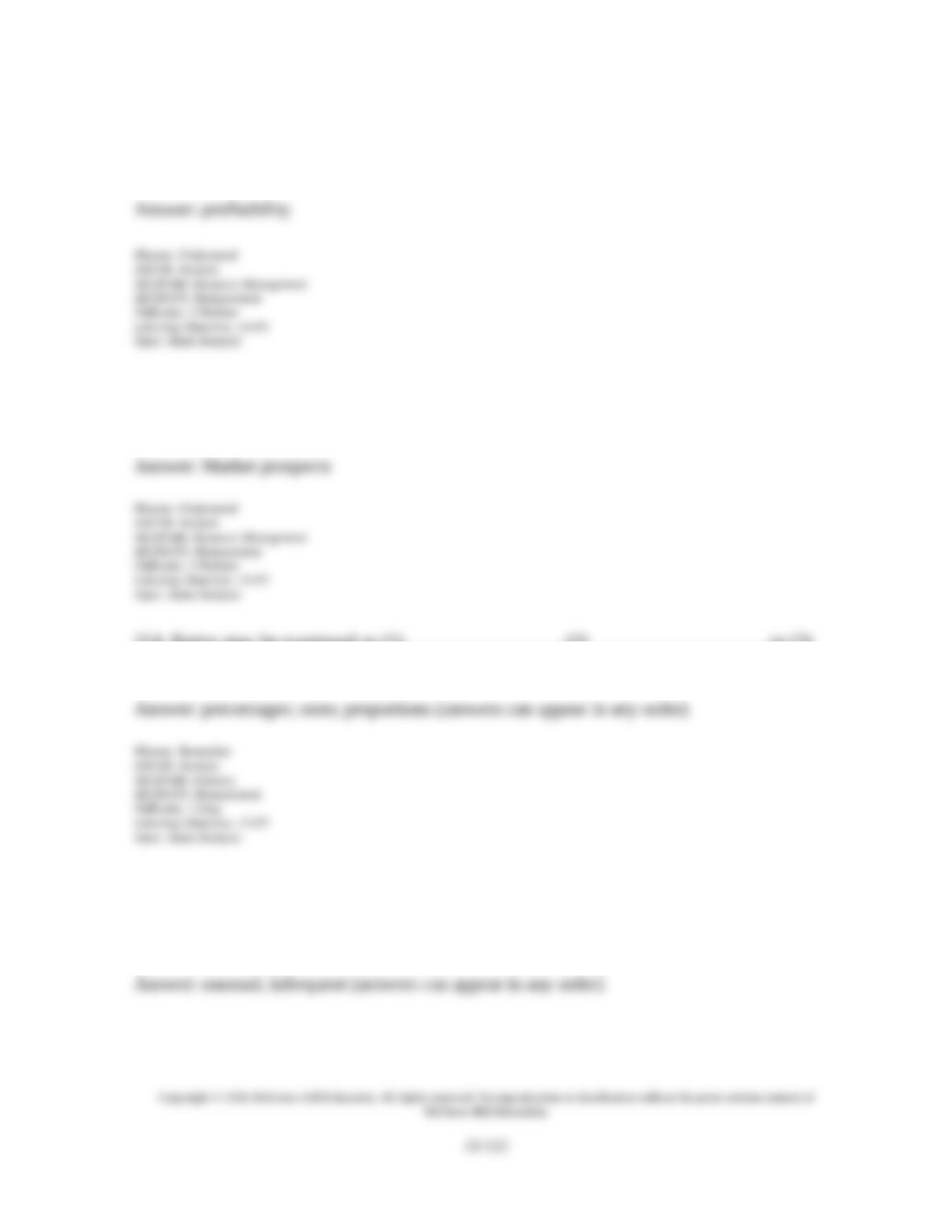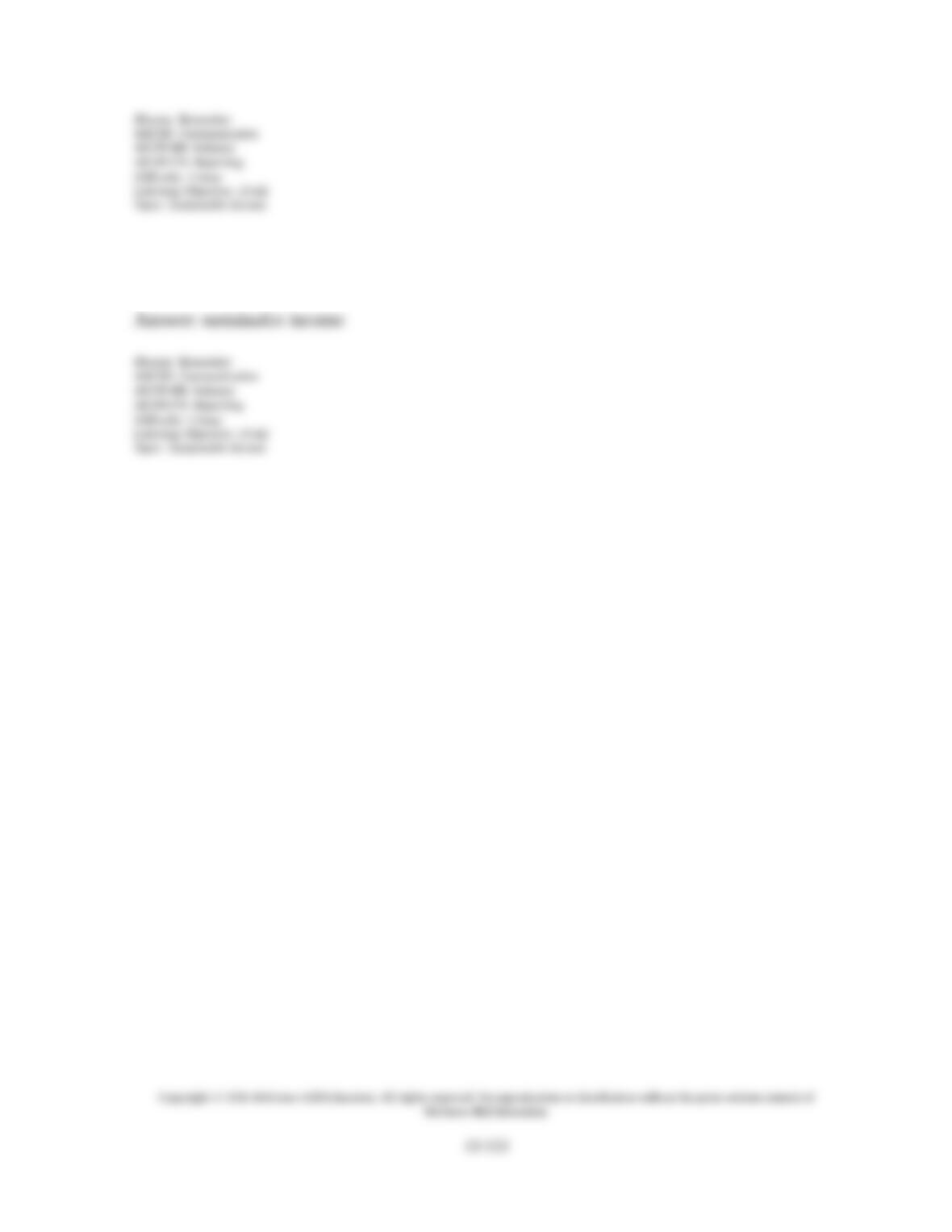Kouris Company Consolidated Balance Sheets
(in millions)
May 31
2016 2015
Assets
Current assets:
Cash and cash equivalents....................................................... $ 634.0 $575.5
Accounts receivable, net of allowance..................................... 2,101.1 1,804.1
Inventories............................................................................... 1,514.9 1,373.8
Other current assets................................................................. 429.9 401.3
Total current assets............................................................... 4,679.9 4,154.7
Property, plant, and equipment, net............................................. 1,620.8 1,614.5
Other long term assets................................................................. 413.2 670.8
Total assets............................................................................. $6,713.9 $6,440.0
Liabilities and Stockholders’ Equity
Current liabilities:
Current portion of long-term debt............................................ $ 205.7 $ 55.3
Notes payable.......................................................................... 75.4 425.2
Accounts payable..................................................................... 572.7 504.4
Accrued liabilities.................................................................... 1,054.2 765.3
Income taxes payable.............................................................. 107.2 83.0
Total current liabilities.......................................................... 2,015.2 1,833.2
Long term liabilities.................................................................... 708.0 767.8
Total liabilities...................................................................... 2,723.2 2,601.0
Stockholders’ equity:
Common stock......................................................................... 2.8 2.8
Contributed capital in excess of par value............................... 589.0 538.7
Unearned stock compensation................................................ (0.6) (5.1)
Accumulated other comprehensive loss................................... (239.7) (192.4)
Retained earnings.................................................................... 3,639.2 3,495.0
Total stockholders’ equity...................................................... 3,990.7 3,839.0
Total liabilities and stockholders’ equity............................... $6,713.9 $6,440.0
Copyright © 2016 McGraw-Hill Education. All rights reserved. No reproduction or distribution without the prior written consent of
McGraw-Hill Education.
13-113
























































































